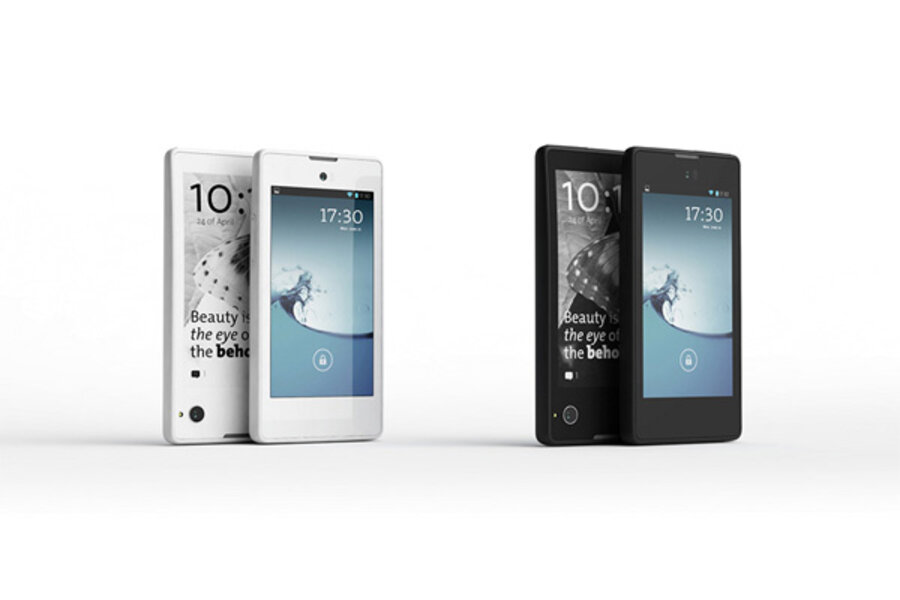Yotaphone: Are two screens better than one?
Loading...
The smartphone world has debuted some strange and wonderful innovations recently, from self-healing skins to curved screens to fingerprint security technology.
Now another innovation can be added to the list: a phone with two screens. Russian tech company Yota released the YotaPhone Wednesday, featuring a standard front smartphone display and a back e-ink screen. Naysayers be wary: the dual-screen option may prove to be more than a gimmick, as it addresses a common smartphone problem: battery life.
The YotaPhone’s front screen display functions like any other smart phone: touch screen with Android-friendly apps. The back screen however, looks more like a Kindle with an electronic paper display that features standard apps like email, weather, and a dictionary. Though always on, the e-ink back display takes up little to no battery life except when using apps. Yota executives say this allows users to avoid the screen-saver black screen, and therefore utilizing the phone more often.
"The typical user picks up and activates their smartphone more than 150 times a day," says Yota Devices chief executive Vlad Martynov to the BBC.
"Why? Because users worry that messages or information they need or want are hidden behind their phone's black screen. This is a huge distraction and can impede meaningful interaction with our friends, families and colleagues,” he adds.
However, early reviewers say the battery life may not be worth the effort. James Vincent, tech reviewer at UK publication the Independent, says awkward and insensitive navigation, difficulty using apps on the e-ink screen, and otherwise normal Android features were a deal breaker.
“Unfortunately the possibilities of the display are let down by mostly unintuitive software and glitchy hardware,” he writes.
However, Yota told tech blog Pocket-lint it is working on a new version for 2014 that would address some features, and allow for a larger roll out.
The phone runs on a Google Android operating system, and offers 2GB of RAM, 32GB of memory, a 1.7GHz processor, and a front-facing 720x1280 4.3-inch display. It also features a 12-megapixel rear-facing camera.
The YotaPhone is available Wednesday in Russia, Austria, France, Spain and Germany for 499 Euros ($676). Yota hopes to be in 20 countries in 2014 according to Reuters, though there are not yet plans to release in the competitive US smartphone market.








